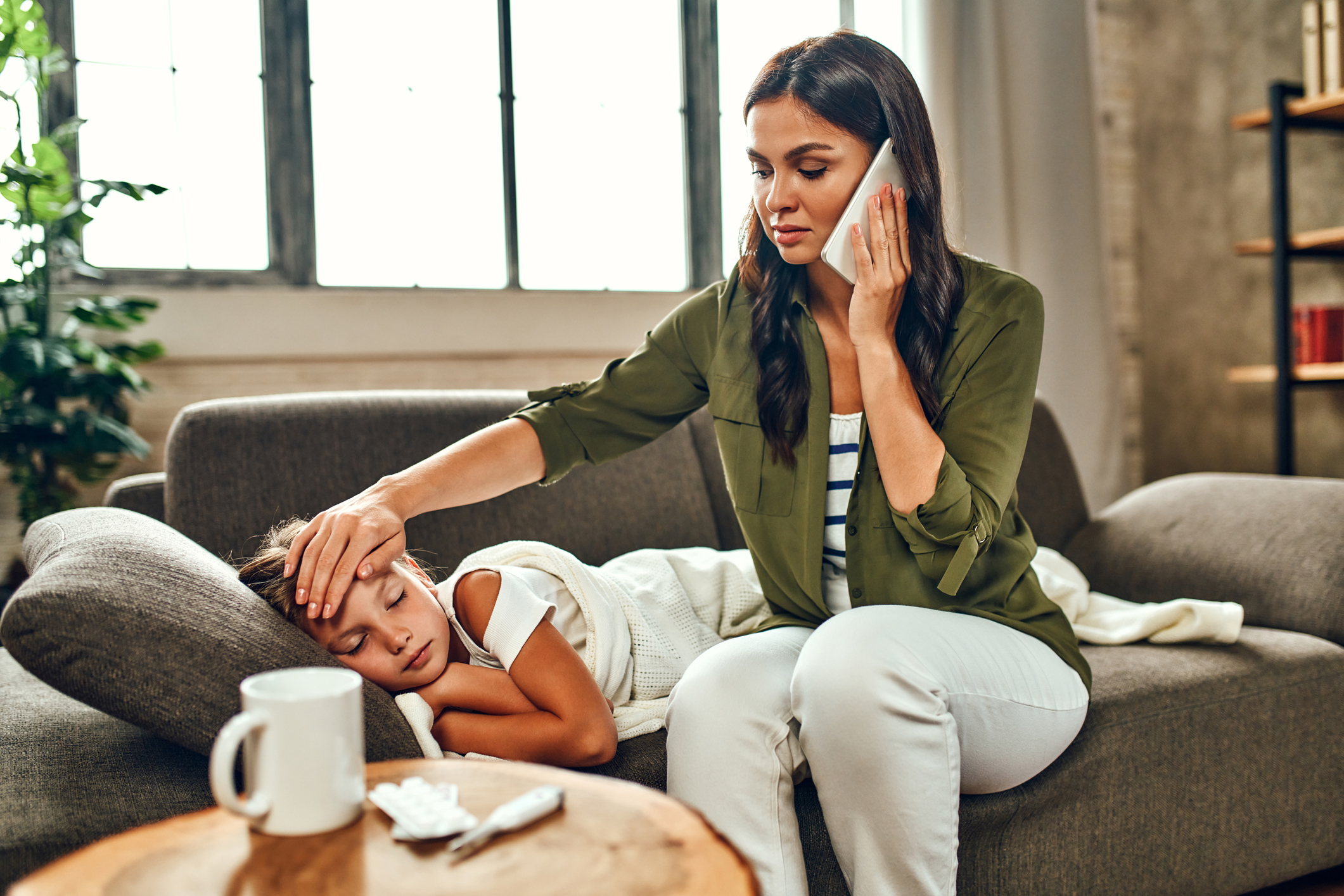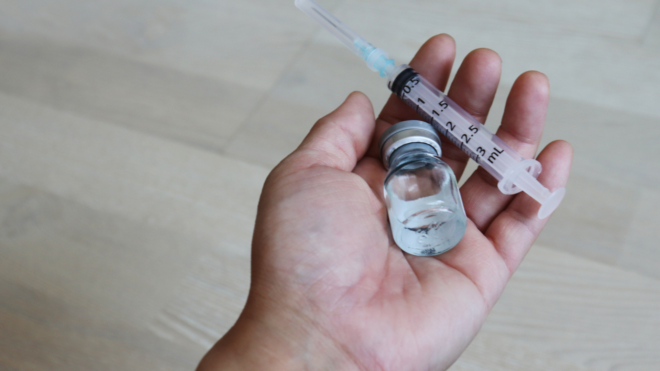

If there’s one thing all parents agree on, it’s that they want their kids to be happy and healthy. Of course, as we head into the colder months, keeping kids healthy is often easier said than done. As soon as your little one is sick, you have to upend your whole routine to keep them home from school, go to doctor’s appointments, and keep track of treatment. Last year, for the first time, parents had to deal with the “tripledemic,” the confluence of three powerful viruses: the flu, COVID-19, and RSV. Since kids sometimes have a hard time expressing exactly what’s wrong, it can be a challenge to know how to help them — or which virus they have.
We spoke to Katie E. Golden, MD, a board-certified emergency medicine physician and a medical editor at GoodRx, to learn more about the tripledemic; here’s what she had to say.

Can you briefly describe what the tripledemic is, for people who haven't heard of it before?
The tripledemic is a term used to describe the increased rates of COVID-19, RSV, and flu that occur at the same time — typically during the traditional cold and flu season. The term became popular last year, when we saw this happen for the first time.
What are the best ways to differentiate between the symptoms of COVID-19, RSV, a cold, and the flu?
COVID-19, RSV, the flu, and the common cold are all respiratory infections caused by viruses. So they tend to have similar symptoms, which can make it hard to differentiate one from another. But there are a few differences that can provide some clues.
RSV and the common cold share very similar symptoms — like a runny nose and cough. But the common cold usually stays in the upper part of the respiratory tract, like the nose and throat. And RSV is more likely to affect the lungs, causing a more serious cough or trouble breathing.
COVID and the flu can also cause similar symptoms to RSV and a cold. But they are more likely to cause a fever and body aches. And the flu tends to come on pretty quickly.
Since there is a lot of overlap, it can make it hard for parents to know what they or their child might be battling and whether to seek treatment. At GoodRx Health, our staff of doctors, pharmacists, and healthcare experts write articles that make it easy to compare symptoms, learn about treatments, and know when it’s time to see a provider. We try to provide quick and convenient answers to the most common questions. But the only way to know for sure which illness someone has is to get tested for COVID, RSV and the flu.
How can parents stay aware of spikes in each illness?
We publish a “Tripledemic tracker” that shows prescription fill rates across the country. It allows people to track the prescription medications for each of the tripledemic illnesses – like Tamiflu for the flu, or Paxlovid for COVID-19. When we see fills increasing, we know that rates of that illness are increasing too. It can be a helpful tool for parents to keep an eye on what illnesses are trending and when.
Right now we are seeing an uptick in RSV cases and prescription fills for oral antibiotics, which are trending significantly higher than the typical nationwide average for this time of year.
Parents want kids to be in school as many days as possible — how should parents decide if they should keep their children home?
It all depends on both their symptoms, and their school’s policy. In general, schools usually ask kids to stay home until they’ve been fever-free for 24 hours and their symptoms begin to improve. If a child is experiencing vomiting with their illness, parents should also wait until it has been over 24 hours since the last episode.
For any infections that require antibiotics, pediatricians often recommend that kids stay home until they have been on the medication for 24 hours. This decreases the chance the child will spread the infection. And for COVID-19, parents should check with their schools to see if they require a negative test to return. If a child tests positive, they should stay home from school for five days and then plan to wear a mask for the next five days.
It can be hard to know when it’s best to keep your kid home from school. But remember: keeping kids home from school when they are sick will help get them back on their feet and in the classroom faster. And it helps prevent the illness from spreading to others.
How can parents save money on treatments?
First, parents can always talk to their healthcare provider if a treatment is out of budget. Sometimes there’s a lower cost generic or alternative treatment that can be prescribed instead.
Second, check GoodRx — even if you have insurance. GoodRx will compare the cost of medications at pharmacies nearby and let you know which one has the best price. With GoodRx you can find affordable prices for antibiotics like Amoxicillin for pneumonia, or antivirals like Tamilfu to treat the flu.
And of course, prevention can also save parents money in the long-run. GoodRx recently partnered with Walgreens, Walmart, and Weis to offer a flat fee for flu shots for anyone paying without insurance.
We created a cold and flu resource center where you can access vaccine and treatment savings and health information all in one place.



